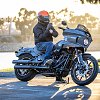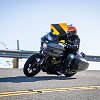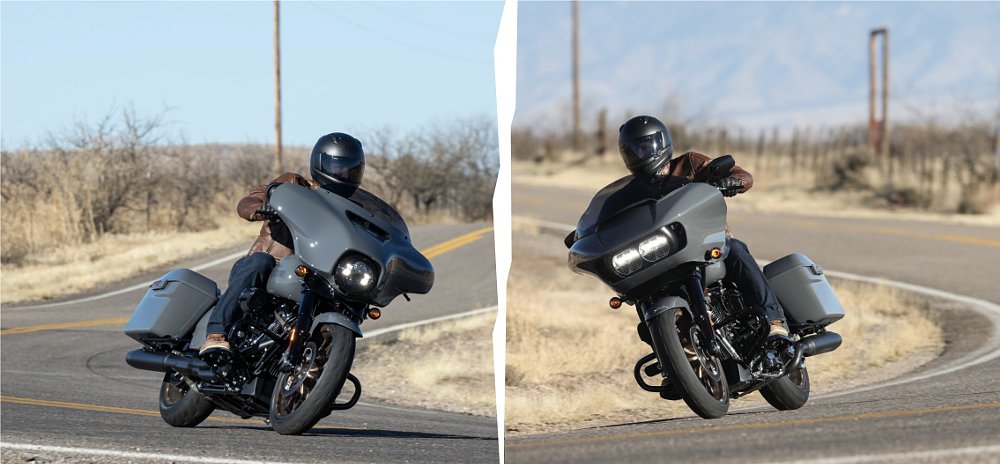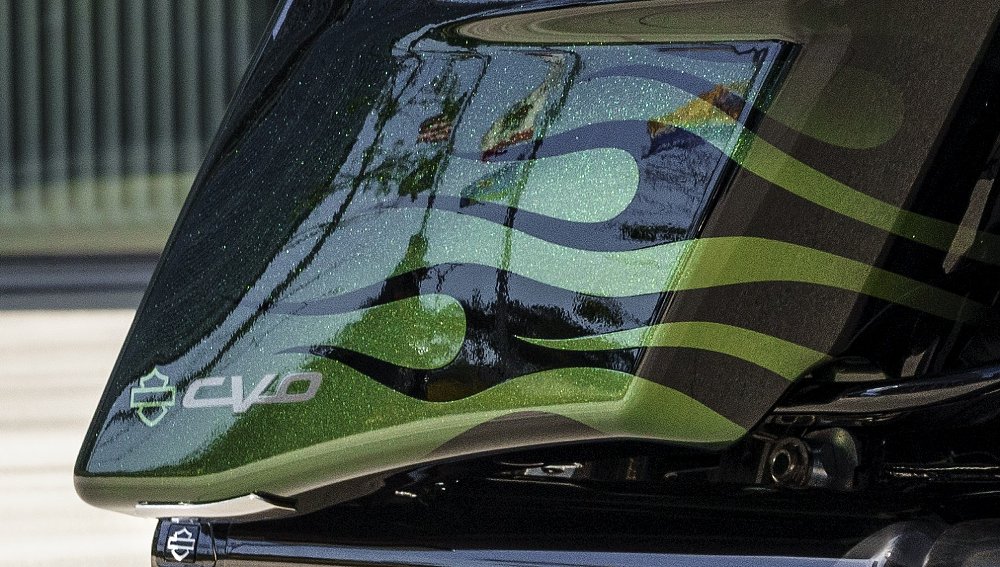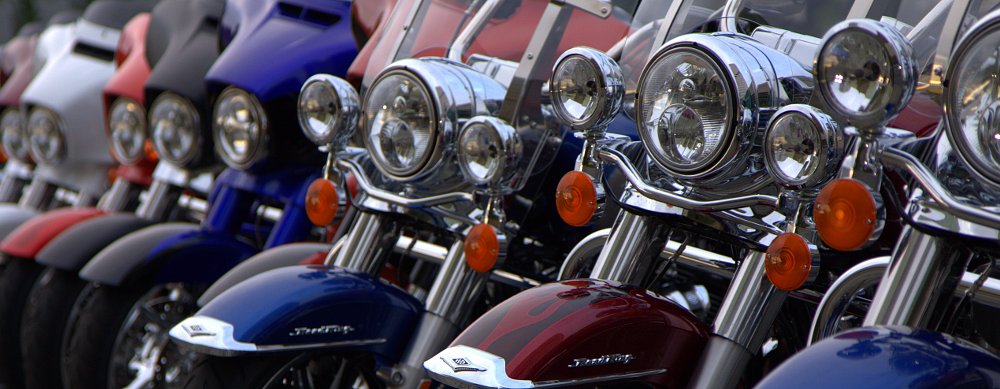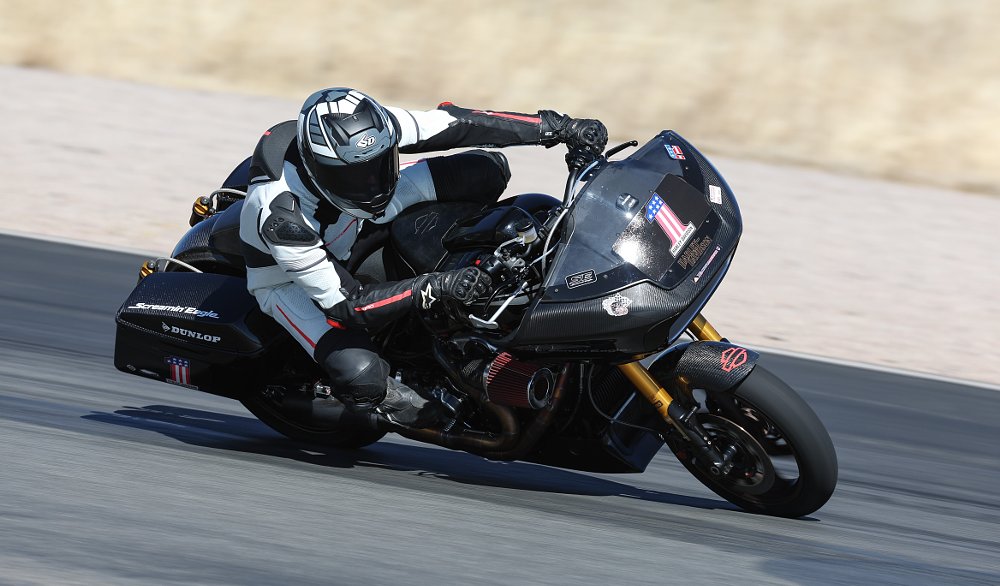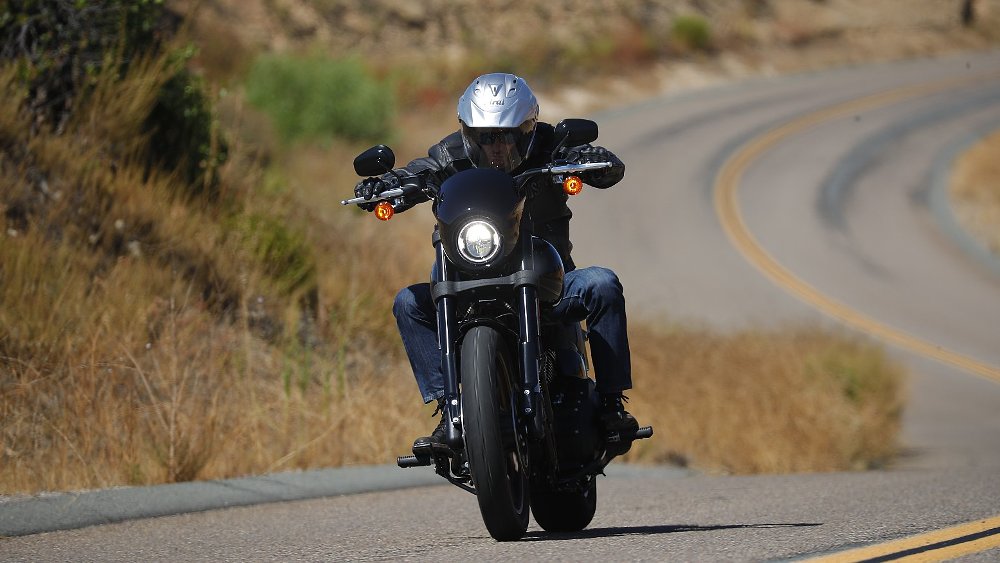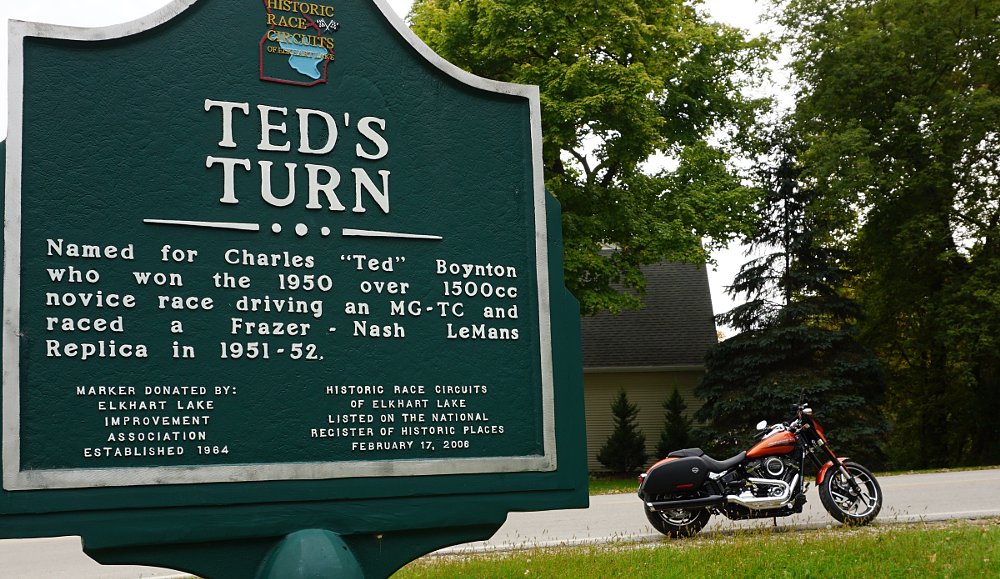Until supply catches up with increasing demand for the 2022 Low Rider ST, Harley-Davidson's newest motorcycle to join the Milwaukee-Eight Softail family of cruisers will be at the top of the most-wanted list at many dealerships across the country. What is so special about the MoCo's new sport-touring cruiser that has mainstream Harley riders dropping deposits and joining wait lists to get a bike they haven't yet seen in person?
Scanning the spec box won't reveal any groundbreaking new technology. What you will find, though, are two features that Harley riders have an insatiable desire for: a big-cubic-inch V-twin powerplant and cool retro style that custom bike builders have been emulating for decades.
Sport-touring purists might scoff when they see that the "ST" in FXLRST stands for sport-touring. But the range of sport-touring machines is vast and who's to say that a Milwaukee-built cruiser can't enter the fray? Like it or not, this is sport-touring, Harley-Davidson style.
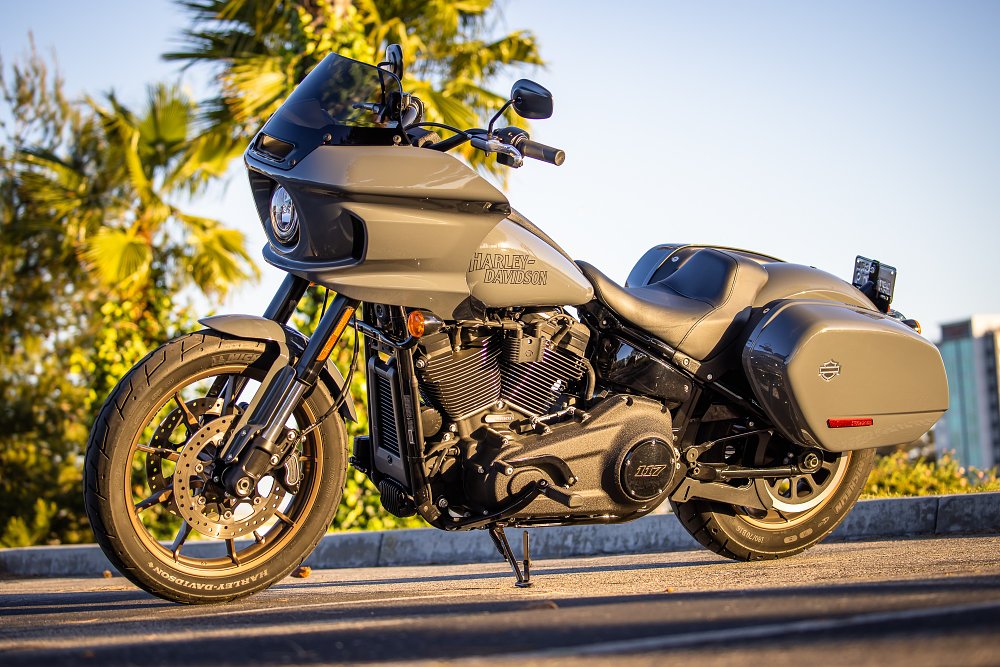
West Coast style
The Low Rider ST has deep roots in a trend that originated in Southern California. For many years, bike builders have been using the FXR, Dyna and Softail models as a foundation for customizing, adding FXRT-style fairings, more horsepower and small hard cases along with suspension upgrades for enhanced canyon prowess. Harley-Davidson put a lot of trust in what their design staffers were seeing at events like the Born-Free Motorcycle Show, the Sturgis Rally and Daytona Bike Week, and the H-D build team did justice to what many refer to as the West Coast style.
"There was a fundamental shift that we saw happening a few years back," explained Brad Richards, Harley-Davidson’s Vice President of Design. "Folks were leaning into performance, and it was really taking root in Southern California. They were restoring FXRTs or FXRs and putting that fairing on there, or they were taking that fairing from a swap meet and figuring out ways to get it on their Dyna. At a lot of the shows that we pay attention to around the world, we were starting to see a couple bikes like this. That's how we spot a trend."

The Low Rider ST takes aim at riders who want to stay on a cruiser and don't want or need the long-haul capability of a full-size dresser like the Road Glide or Street Glide. The FXLRST rider wants a daily ride that can rip the canyons with hot rod performance like the Low Rider S, but with more wind protection than the small club-style fly screen provides.
There is no mistaking the FXLRST fairing for anything but a well executed homage to the FXRT of the 1980s. Credit for that goes to Harley's Lead Designer and Stylist, Dais Nagao, who has been involved in the Low Rider S development since the 2016-1/2 Dyna model. The new frame-mounted fairing bears a distinct resemblance to the FXRT/P fairing of yesteryear and it is a key element in the overall appearance of the Low Rider ST. But make no mistake about it, this is a clean-sheet design that Nagao created on his sketchpad to give the FXLRST its own modern identity while maintaining respect for the history of the FXR.
"This is a purpose-built fairing," said Paul Weiss, H-D's Engineering Manager for the Softail platform and technical lead for the FXLRST project. "The styling team really took their time to massage it to get it to what you see today."
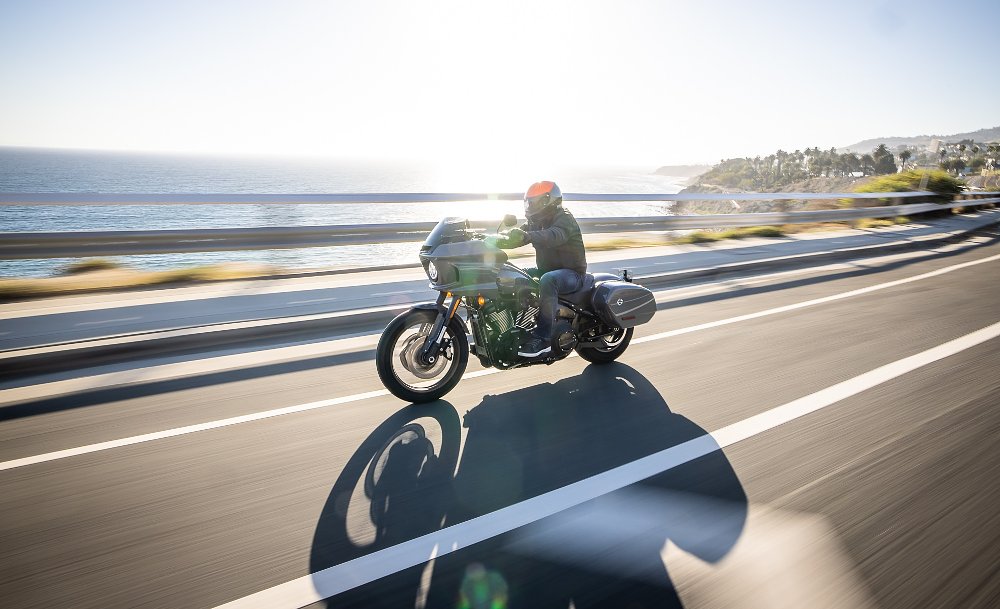
The fairing was developed through a combination of CFD (computational fluid dynamics) analysis and real-world testing. In designing the fairing, Weiss said that keeping head buffeting to a minimum was the primary functional target they were going for. CFD allowed designers to observe wind flow around a 3D model of the fairing and adjust the design as needed. Nagao pointed out how every line and contour of the fairing works to create a stable pocket of air with the standard six-inch windshield that is ideal for a rider height around five feet and 10 to 11 inches. For taller riders, an optional 10-inch windshield is available in the catalog, and if less windshield is your thing, there's also a short, gold-coated wind deflector.
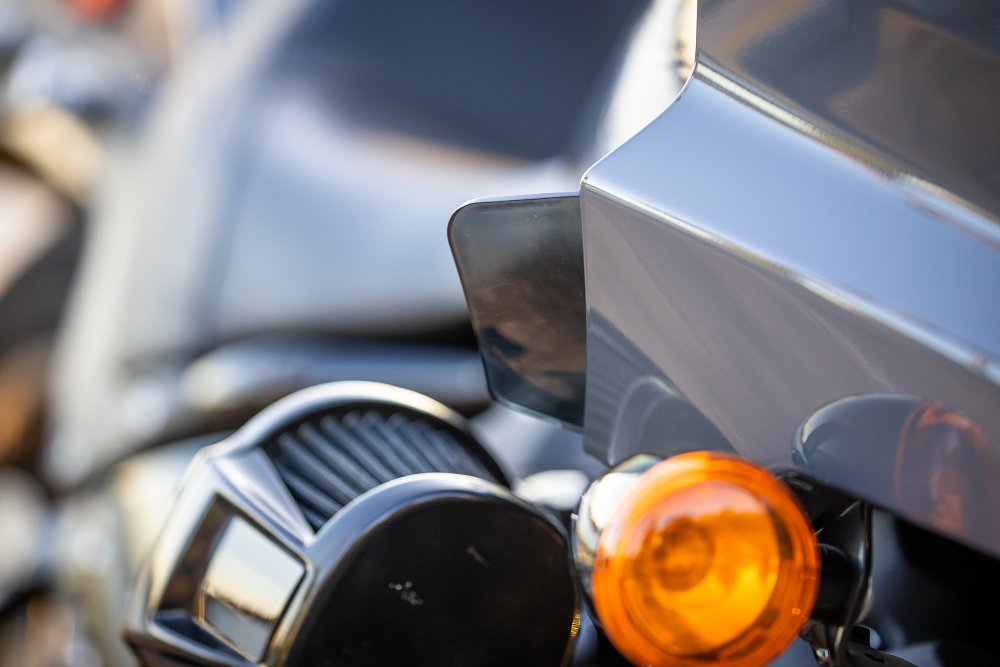
CVO power
When it comes to displacement, Harley riders seem to have a standing order for more. No matter how much we get from the factory, it's never enough. The Low Rider ST comes powered by Harley's largest factory-installed production engine, which was previously only available in the limited-edition CVO models. Now available in the Low Rider ST and Low Rider S, as well as the Road Glide ST and Street Glide ST, is an air-and-oil-cooled, 117-cubic-inch Milwaukee-Eight with a claimed horsepower output of 103 and 125 foot-pounds of torque coming on early in the powerband at 3,500 rpm. That torque number represents a five percent increase over the Low Rider S 114, thanks to a displacement-matched, high-performance cam, a forward-facing Heavy Breather air cleaner and the two-into-two exhaust. The solid-mounted Big Twin uses dual counter-balancers to reduce vibration. While a little bit of shake is still noticeable at idle, I didn't experience any undue vibration through the handlebar when riding.
This engine makes gobs of torque that sets you back against the seat support with every twist of the throttle. There may be enough power on tap to keep some ST owners content, but at the very least many owners will want to add slip-ons or a good two-into-one exhaust to give the 117 a nice growl to go along with its bite. The usual performance upgrades for the 117 are already in the P&A catalog, and if bigger numbers are your thing and you've got an additional $3,530.95 to spend (not including installation), you can build the 117 into a 131-inch beast with a Stage IV kit that includes CNC-ported heads with one-millimeter bigger valves, 4.31-inch cylinders, high-compression forged pistons, an SE8-517 high-lift cam with lifters and performance cam bearing, 64 mm throttle body with cast manifold and high-flow injectors, and a two-into-one exhaust pipe.
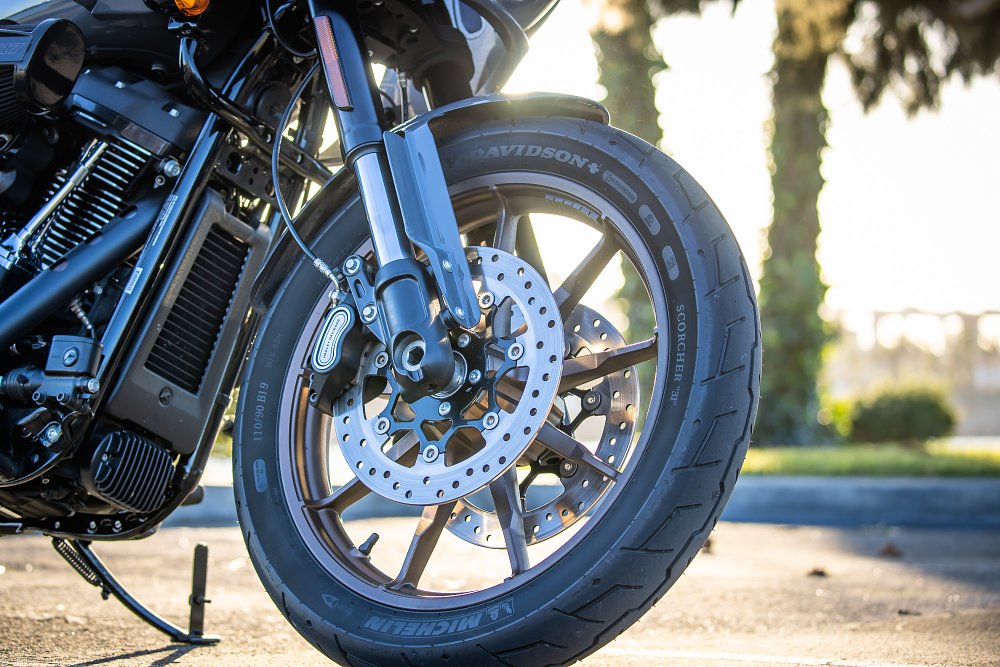
More Low Rider ST hard parts
The Low Rider S and Low Rider ST share the same 43 mm inverted fork, but the single-cartridge internals are not identical. The ST fork is calibrated to compensate for the additional 17 pounds of weight from the fairing.
The Low Rider ST has been given the taller 56 mm Heritage monoshock under the seat, a drop-in swap that increases wheel travel by an inch over the standard Softail chassis. Total suspension travel at the rear is 4.4 inches with 5.1 inches at the front. The taller rear shock also raises seat height by 0.75 inches for a total 180-pound laden seat height of 27 inches. For cornering clearance, the saddlebags have been vertically shifted by two inches compared to Sport Glide bags.
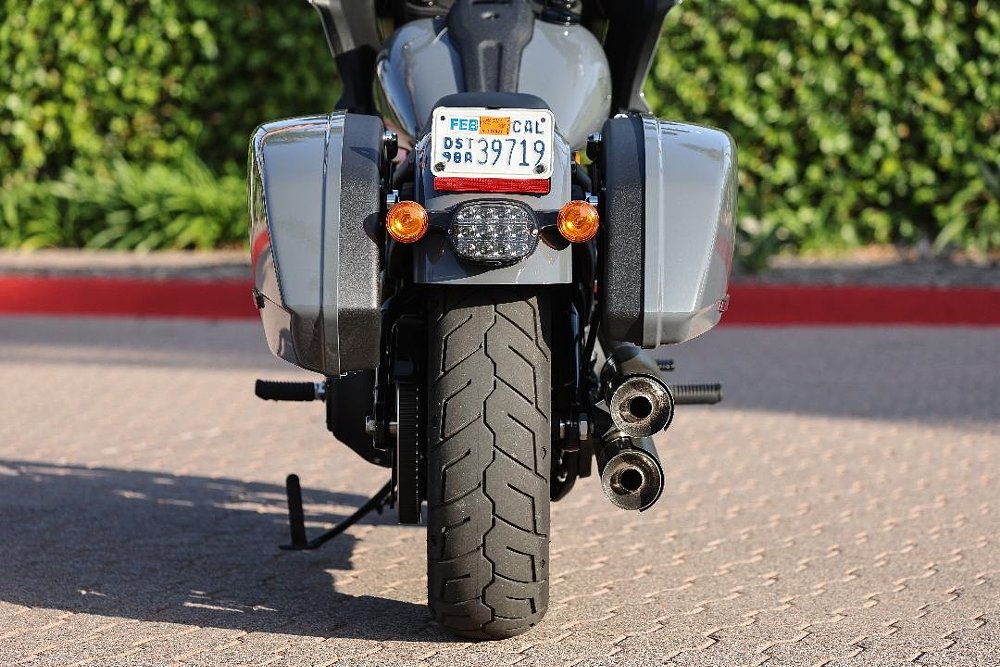
The staggered saddlebags on the FXLRST are lockable with a clamshell design that opens with a lever located at the front of the saddlebag between the inner case and the frame. This placement puts the lever within easy reach of the rider while remaining in the seat. Combined capacity of the saddlebags is 1.9 cubic feet. Not enough space in either one for a full-faced helmet but enough to carry a good amount of gear, layers, tool pack and snacks for the road. Both bags have a small hydraulic shock to keep the clamshell half from dropping open. For day rides when storage isn't necessary, the bags can be removed in a matter of seconds.
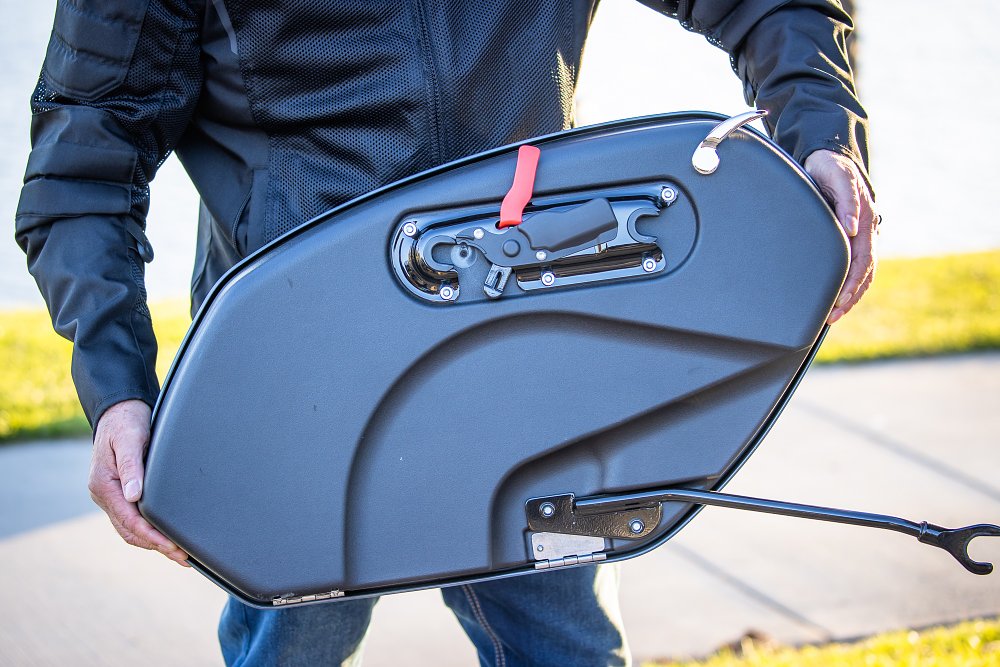
Instrumentation has been raised from the traditional location on the tank to the top clamp of the handlebar riser. The reason for this was twofold. Aesthetically, the tank profile now appears more streamlined when viewing from the side. From a safety aspect, the new elevated location places the gauges closer to the rider's line of sight with the road.
A compact 2.14-inch LCD display features a digital speedometer, a bar graph fuel gauge, and a gear position indicator. A toggle switch on the lefthand control allows you to choose from a tach, clock, odometer, A and B trip meters, or range. A smaller display below the main gauge gives you a neutral indicator, left and right turn signal indicators, high beam, and the usual array of warning lights. Visibility of the small gauge is surprisingly good during the day and is only affected by glare from the sun at certain angles.
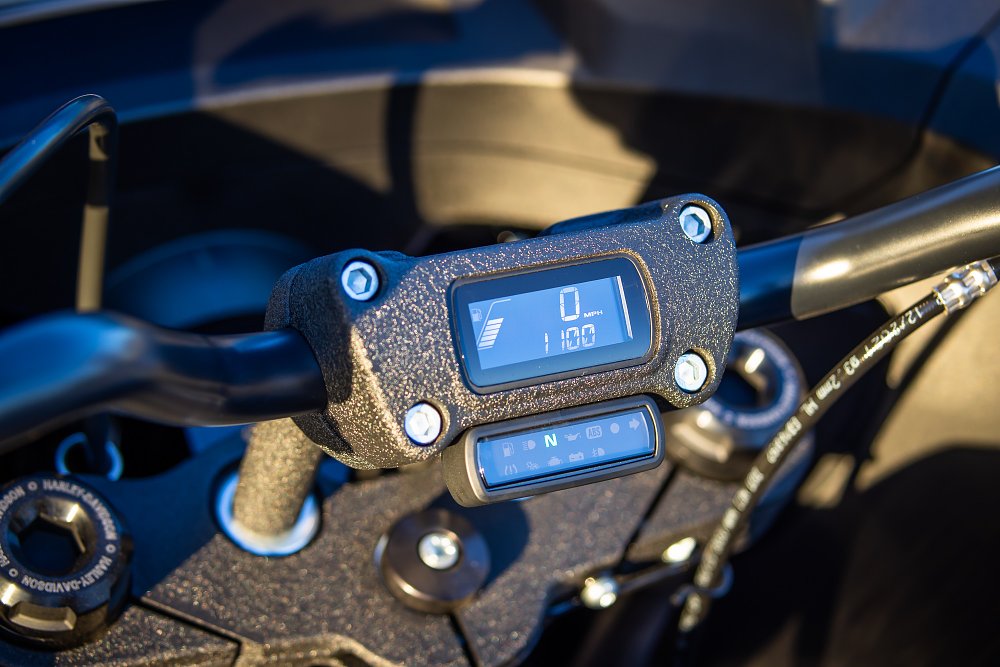
ABS comes standard on the Low Rider ST along with dual, four-piston fixed calipers up front and a two-inch floating caliper at the rear. All three rotors are 300 mm floaters with a black split-spoke design that contrasts well with the dark bronze cast aluminum wheels.
The Low Rider ST on the road
With a claimed running weight of 721 pounds, the Low Rider ST is still more cruiser than sport-touring machine. But that isn't a bad thing if you're accustomed to the size and weight of a Big Twin bike. I stand at five feet, nine inches tall with a 30-inch inseam and have plenty of seat time on most of the Harley-Davidson Softail and Touring models. The new FXLRST is an approachable machine with perfect ergonomics for a rider of my size. The fairing did an excellent job of deflecting wind and I experienced no helmet buffeting all the way up to 80 mph. Three vents, one in the center and two on either side of the headlight, direct an air stream that forms a turbulent-free air pocket behind the fairing.
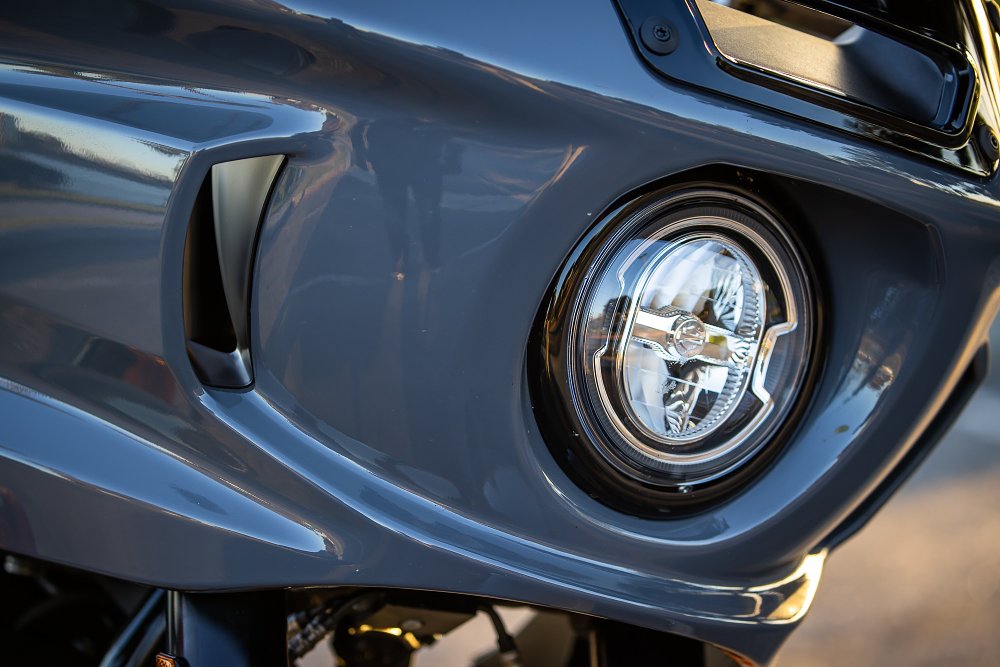
The foot position is slightly more forward than a true mid-control location but I find this far more comfortable than forward controls. At first, the pegs feel wide, but it doesn't take long to get fully acclimated. The increased lean angle (31.3 degrees on both sides) inspires confidence on twisty canyon roads. Aggressive riding will still have you scraping pegs but cornering is stable and much more performance-oriented than a standard Softail.
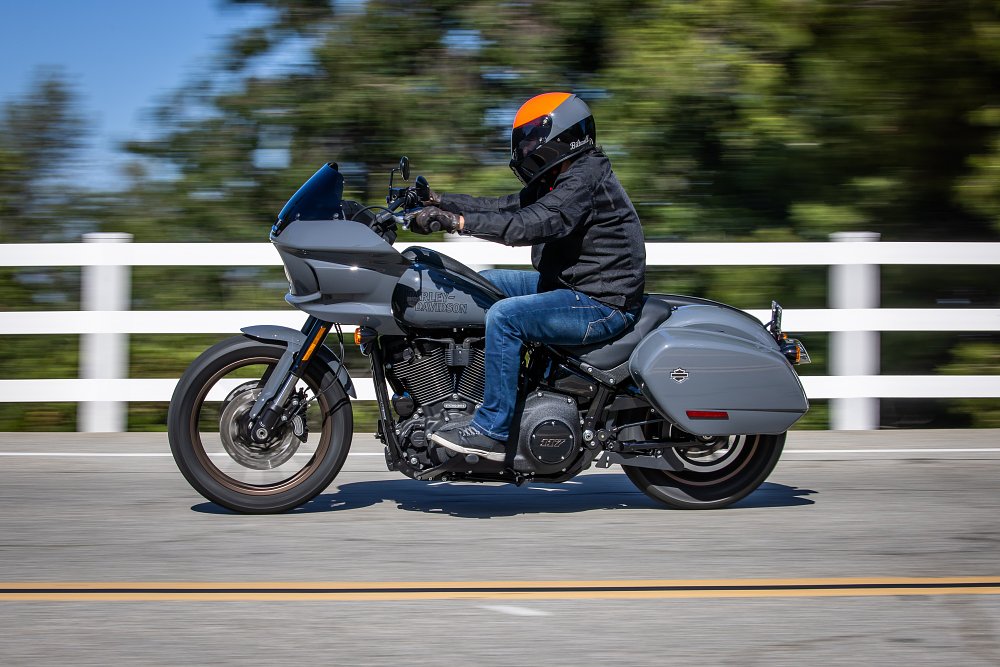
I logged about 700 miles with our test bike over a two-week period. I ripped through my favorite canyon roads, I cruised the coast, I ran errands, and I even split lanes during the heaviest rush-hour traffic that downtown Los Angeles could throw at me, something I normally try to avoid. In traffic, the Low Rider ST feels nimble and I never felt like any part of the bike was too wide to filter between lanes. Clutch pull is easy and braking is more than adequate, considering the Low Rider ST's weight and size.
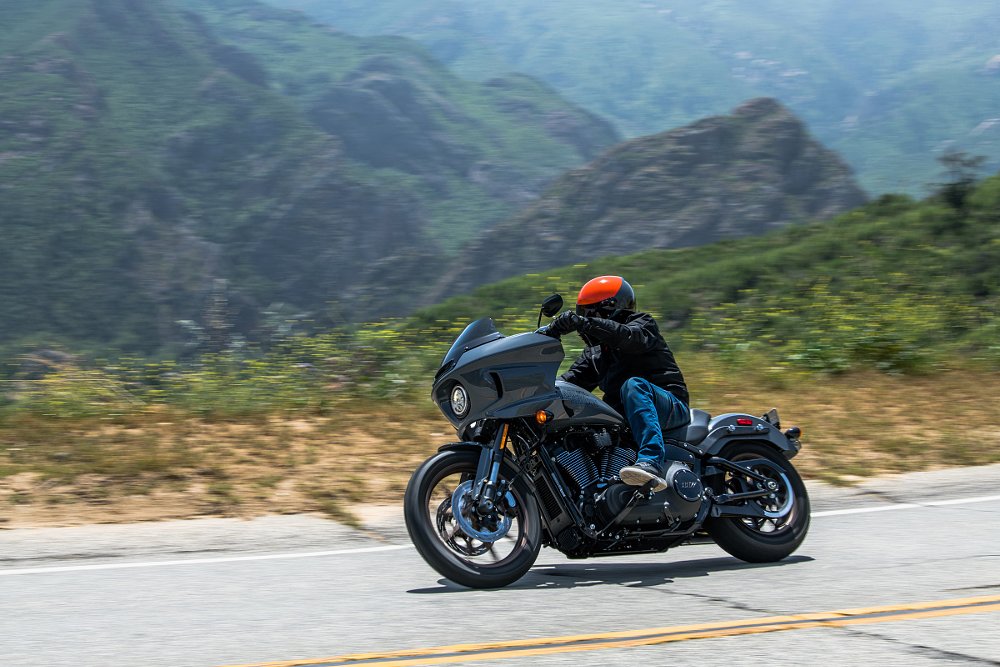
The Motor Company estimates mileage at 47 mpg, which seems optimistic. I guess it might be doable if you ride very conservatively, but c'mon. Who does that? My average after four fill-ups was 38.2 mpg. With a five-gallon capacity, this gives me a range of 191 miles per tank.
Radiant heat from the exhaust pipes is something that Harley riders are well accustomed to. It's even welcomed when riding in cold weather. But watch out when temps are up there in the 90s or more. There was no escaping the glaring sun as I sat at a stoplight during one of SoCal's freak 100-degree springtime heat waves. My right leg was on fire and I squirmed in the seat anxiously waiting for a green light so I could get a little cooling breeze flowing.
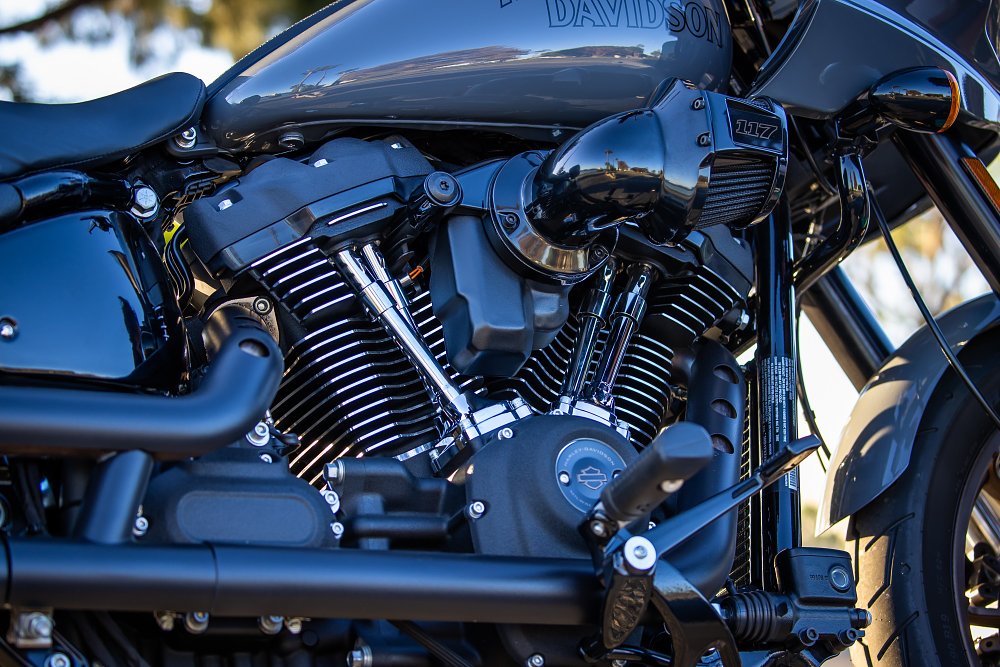
I don't have any major complaints about the Low Rider ST, though I have a couple of minor gripes that are not unique to the ST. Harley-Davidson's gear position indicator doesn't use a sensor; it's based on speed and rpm, so when the bike comes to a stop with the clutch engaged, the GPI goes dark no matter what gear the transmission is in. If you normally kick it down into first, like I do, this is no big deal. But sometimes I forget and wish I could see what gear I'm in when I pull up to an intersection.
Another shortcoming on the Low Rider ST is the solo seat. No complaint about the height or position in the rider triangle, and it's actually quite comfortable for cruising around town. Where it falls short is when you're on the throttle which, for me, is pretty often. The factory seat fails at holding me in place whenever that 125 foot-pounds of torque kicks in. I end up pulling myself forward with my arms, which gets tiresome and awkward on a fun, twisty road. The seat would be the first thing that I would replace.
The Low Rider ST is available in Vivid Black for an MSRP of $21,749. Opting for the Gunship Gray colorway ups the price to $22,199. Before you think that the FXLRST is priced on the high side for what it is, consider that the first production run of these bikes was scooped up by dealers within hours, and all of the L.A.-area dealers that I visited had at least half a dozen pre-orders.
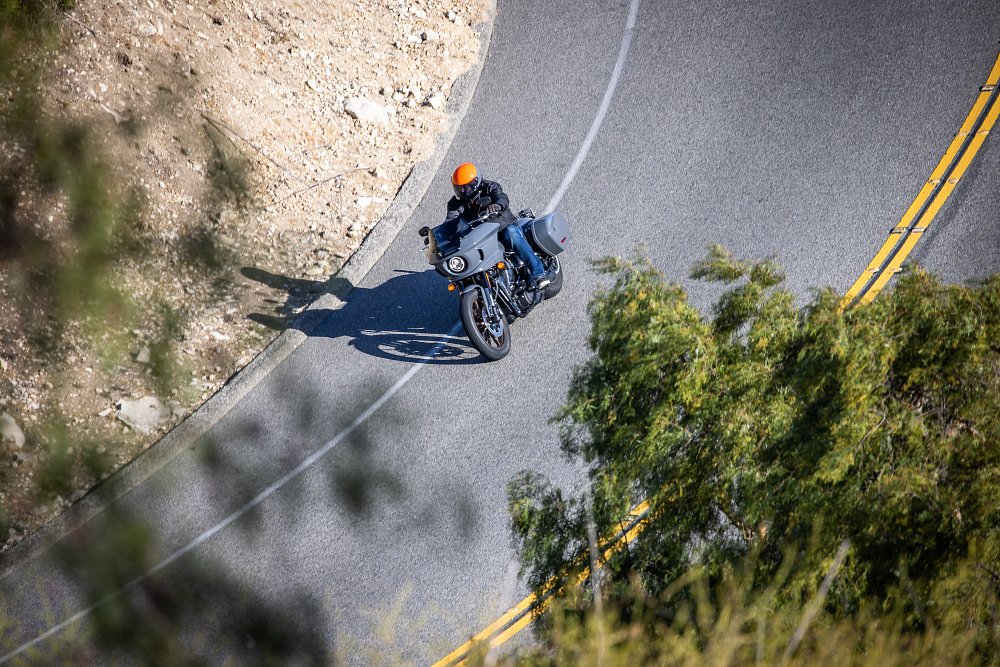
So, how does the Low Rider ST size up as a sport-touring machine? Well, TeamZilla Managing Editor Lance Oliver may have said it best in a recent Highside/Lowside podcast: "Sport-touring is something you do." Finding the right motorcycle to do it on depends on the individual. For those who love big American V-twin motorcycles, the FXLRST is it.
| 2022 Harley-Davidson Low Rider ST FXLRST | |
|---|---|
| Price (MSRP) | $21,749 (Vivid Black), $22,199 (Gunship Gray) |
| Engine | 1,923 cc (117 ci), air-cooled, eight-valve, pushrod V-twin Milwaukee-Eight 117 |
|
Transmission, final drive |
Six-speed, belt |
| Claimed horsepower | 103 |
| Claimed torque | 125 foot-pounds @ 3,500 rpm |
| Frame | Steel tube |
| Front suspension | 43 mm inverted fork; 5.1 inches of travel |
| Rear suspension | Heritage monoshock; 4.4 inches of travel |
| Front brake | Dual four-piston calipers, 300 mm floating discs, with ABS |
| Rear brake | Single two-piston floating caliper, 300 mm disc, with ABS |
| Rake, trail | 28 degrees, 5.7 inches |
| Wheelbase | 63.6 inches |
| Seat height | 27 inches (laden with 180 pounds) |
| Fuel capacity | 5.0 gallons |
| Tires | Michelin Scorcher 31, 110/90B19 front, 180/70B16 rear |
| Claimed weight | 721 pounds wet |
| Available | Now |
| Warranty | 24 months, unlimited mileage |
| More info | harley-davidson.com |






